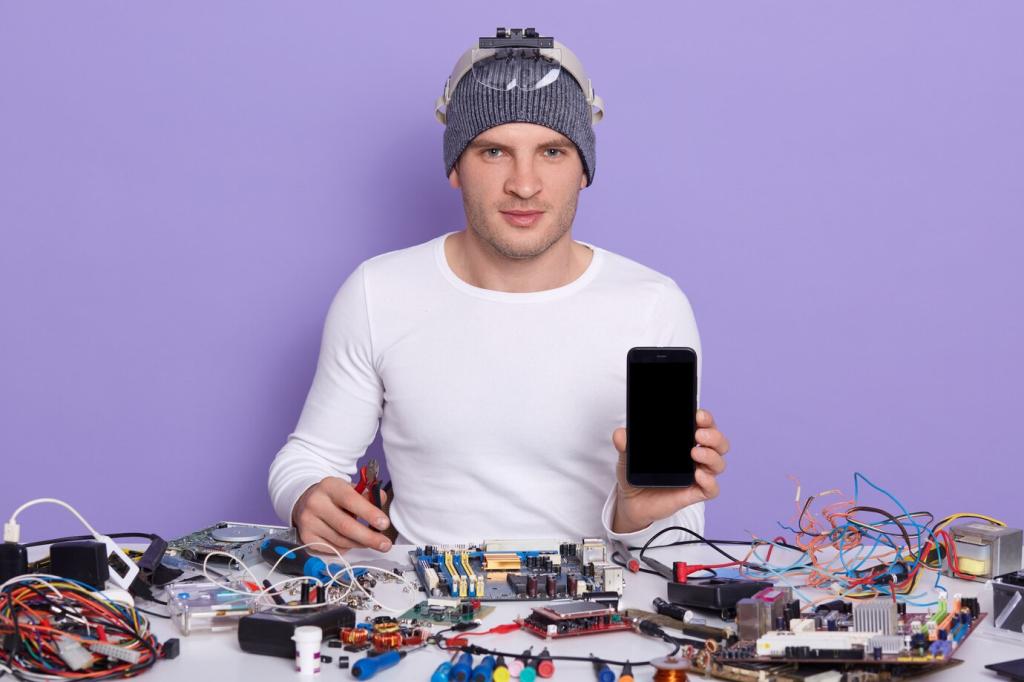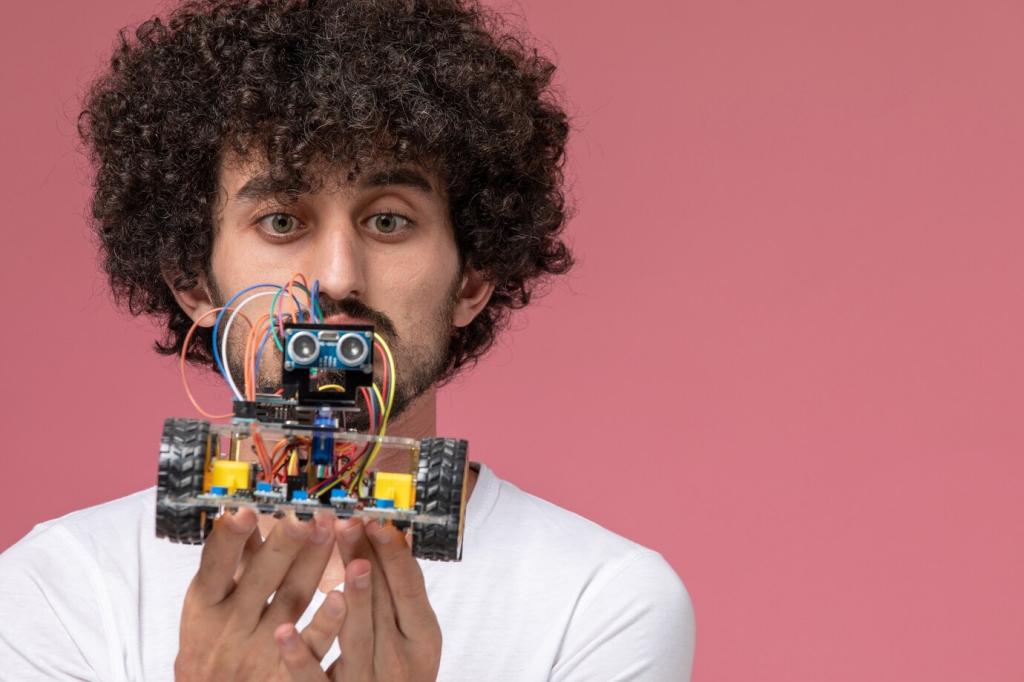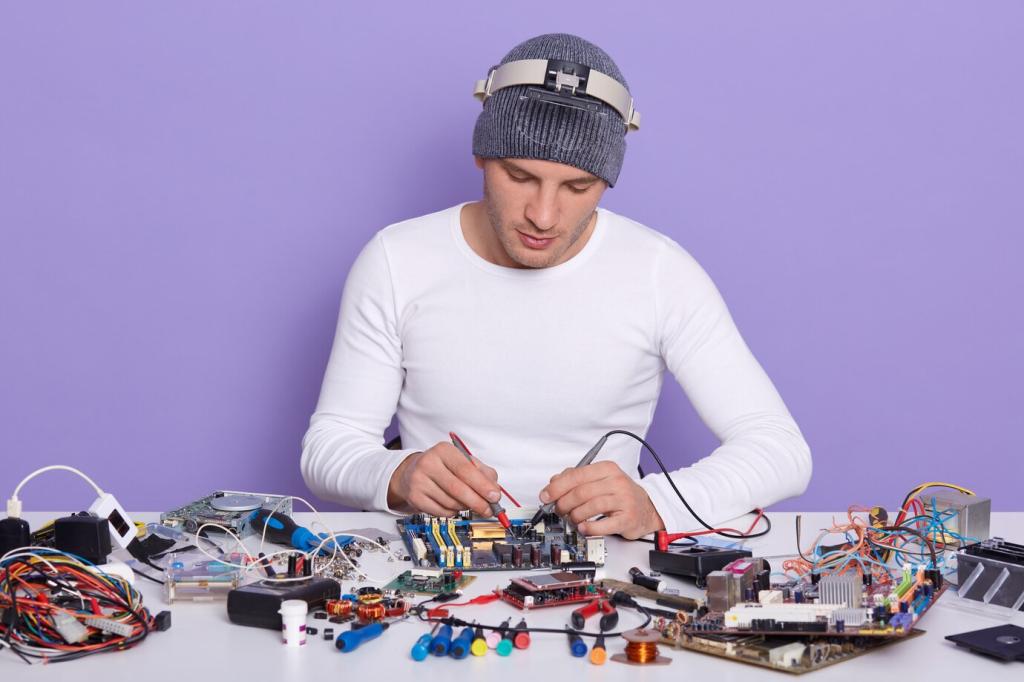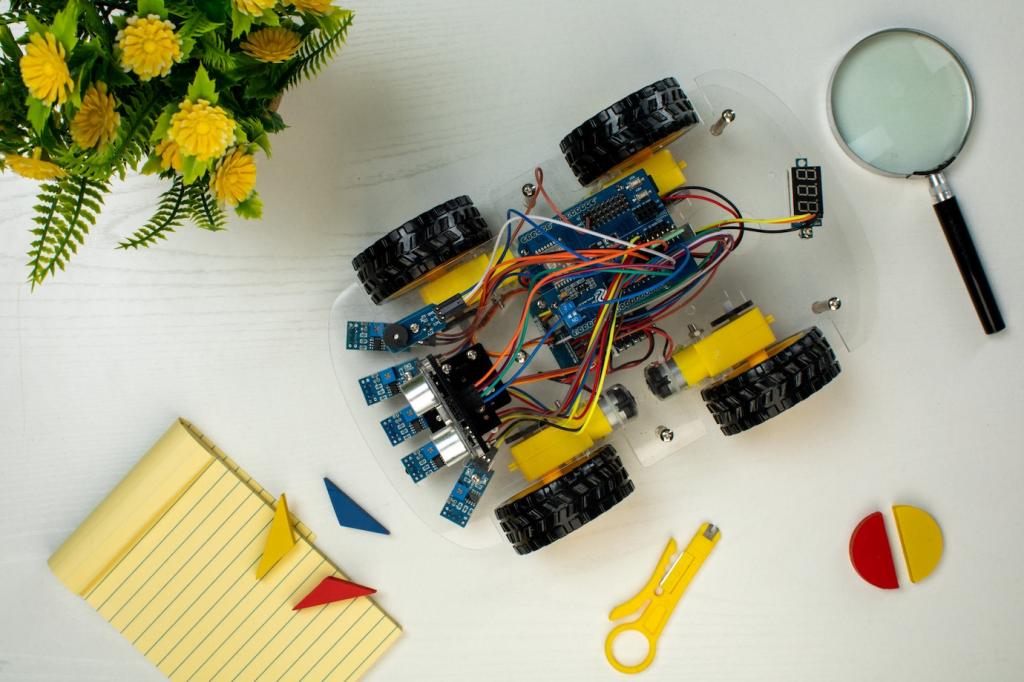Make It Interactive: Buttons, Potentiometers, and Fun Inputs
Wire a momentary button using INPUT_PULLUP to simplify hardware and reduce parts. Use a software state variable to switch between off and a warm, dim glow. Debounce in code so every press feels crisp, turning Simple LED Projects with Arduino into practical bedside helpers.
Make It Interactive: Buttons, Potentiometers, and Fun Inputs
Read the potentiometer with analogRead, map 0–1023 to 0–255, and write brightness with analogWrite. Add gentle smoothing so hand jitters do not cause flicker. The physical dial makes Simple LED Projects with Arduino satisfying, precise, and warmly analog in a digital world.







